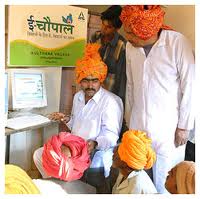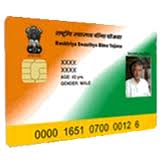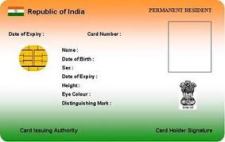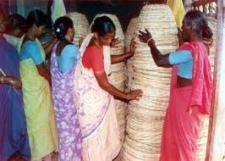The idea of Mega food park is an innovative initiative from Government of India which is expected to facilitate state-of-the-art infrastructure with efficient supply chain management from farm gate to retail outlets. The projects are meant to bring about substantial reduction of wastage, value addition, employment generation and increased income for farmers. A mega food park provides various facilities to food processors, farmers, retailers and exporters, thus help in fast growth of food processing industries. The scheme is tailored to be implemented in a market-driven manner commensurate with global and national demand. Innovative supply chain management will be the key to implementation of this scheme.
What is Mega Food Park
21 Jul 2012
By
Admin
Related Posts with thumbnails for bloggerblogger widgets
Continue reading..
Women Welfare | Women Welfare Programmes in India
9 Apr 2012
By
Admin
Priyadarshini
Women’s Empowerment and Livelihood Programme in Mid-Gangetic Plain (WELP) also called Priyadarshini is being implemented with assistance of International Fund for Agricultural Development in 13 Blocks spread over 5 Districts in Uttar Pradesh and 2 Districts in Bihar. It aims at holistic empowerment of vulnerable groups of women and adolescent girls in the project area through formation of Women’s Self Help Groups (SHGs) and promotion of improved livelihood opportunities. Over 1,00,000 households are to be covered under the project and 7,200 SHGs will be formed during the project period ending 2016-17. The beneficiaries are expected to be empowered to address their political, legal and health issues through rigorous capacity building. National Bank for Agriculture and Rural Development is the lead programme agency for implementation of the programme which became effective in December 2009.
Related Posts with thumbnails for bloggerblogger widgets
Continue reading..
JNNSM | Jawaharlal Nehru National Solar Mission
4 Mar 2012
By
Admin
 The National Solar Mission is a major initiative of the Government of India and State Governments to promote ecologically sustainable growth while addressing India’s energy security challenge. It will also constitute a major contribution by India to the global effort to meet the challenges of climate change. India is a tropical country, where sunshine is available for longer hours per day and in great intensity. Solar energy, therefore, has great potential as future energy source. It also has the advantage of permitting the decentralized distribution of energy, thereby empowering people at the grassroots level.
The National Solar Mission is a major initiative of the Government of India and State Governments to promote ecologically sustainable growth while addressing India’s energy security challenge. It will also constitute a major contribution by India to the global effort to meet the challenges of climate change. India is a tropical country, where sunshine is available for longer hours per day and in great intensity. Solar energy, therefore, has great potential as future energy source. It also has the advantage of permitting the decentralized distribution of energy, thereby empowering people at the grassroots level.
Related Posts with thumbnails for bloggerblogger widgets
Continue reading..
Universal Service Obligation Fund of India | Functions of Universal Service Obligation
10 Dec 2011
By
Admin
Apart from the higher capital cost of providing telecom services in rural and remote areas, these areas also generate lower revenue due to lower population density, low income and lack of commercial activity. Thus normal market forces alone would not direct the telecom sector to adequately serve backward and rural areas. Keeping in mind the inadequacy of the market mechanism to serve rural and inaccessible areas on one hand and the importance of providing vital telecom connectivity on the other, most countries of the world have put in place policies to provide Universal Access and Universal Service to ICT. Universal Service Obligation Fund of India serves the same purpose
Related Posts with thumbnails for bloggerblogger widgets
Continue reading..
Mahatma Gandhi National Rural Employment Guarantee Act | MGNREGA
31 Aug 2011
By
Admin
 The objective of the Mahatma Gandhi National Rural Employment Guarantee Act, 2005 is to enhance livelihood security in rural areas by providing at least 100 days of guaranteed wage employment in a financial year to every household whose adult members volunteer to do unskilled manual work. This act was introduced with an aim of improving the purchasing power of the rural people, primarily semi or un-skilled work to people living in rural India, whether or not they are below the poverty line. Around one-third of the stipulated work force is women. The law was initially called the National Rural Employment Guarantee Act (NREGA) but was renamed on 2 October 2009
The objective of the Mahatma Gandhi National Rural Employment Guarantee Act, 2005 is to enhance livelihood security in rural areas by providing at least 100 days of guaranteed wage employment in a financial year to every household whose adult members volunteer to do unskilled manual work. This act was introduced with an aim of improving the purchasing power of the rural people, primarily semi or un-skilled work to people living in rural India, whether or not they are below the poverty line. Around one-third of the stipulated work force is women. The law was initially called the National Rural Employment Guarantee Act (NREGA) but was renamed on 2 October 2009
Related Posts with thumbnails for bloggerblogger widgets
Continue reading..
National Pension Scheme | NPS Lite Scheme | Swavalamban Yojana
20 Aug 2011
By
Admin
 National Pension System (NPS) is an initiative of Pension Fund Regulatory and Development Authority (PFRDA), the apex body established by Government of India to regulate and develop the pension sector in India. NPS has been extended to all citizens of India with effect from 1st May 2009. To extend the coverage of NPS to the weaker and economically disadvantaged sections of the society with their limited investment potential, PFRDA has launched NPS- Lite which specifically targets the marginal investors and promotes small savings during their productive life. It aims at building up a corpus sufficient enough to buy an annuity for their old age.
National Pension System (NPS) is an initiative of Pension Fund Regulatory and Development Authority (PFRDA), the apex body established by Government of India to regulate and develop the pension sector in India. NPS has been extended to all citizens of India with effect from 1st May 2009. To extend the coverage of NPS to the weaker and economically disadvantaged sections of the society with their limited investment potential, PFRDA has launched NPS- Lite which specifically targets the marginal investors and promotes small savings during their productive life. It aims at building up a corpus sufficient enough to buy an annuity for their old age.
Related Posts with thumbnails for bloggerblogger widgets
Continue reading..
Unique Identification Authority of India | UIDAI | Aadhaar
13 Aug 2011
By
Admin
Unique identification project was initially conceived by the Planning Commission as an initiative that would provide identification for each resident across the country and would be used primarily as the basis for efficient delivery of welfare services. It would also act as a tool for effective monitoring of various programs and schemes of the Government.
In 2006,two projects were on pipeline and approved by the Planning commission of India - 1. Unique ID for Below Poverty Line (BPL) families by the Department of Information Technology and 2. National Population Register and issuance of Multi-purpose National Identity Cards to citizens of India by Registrar General of India. Therefore, it was decided, with the approval of the Prime Minister, to constitute an empowered group of Ministers (EGoM) to collate the two schemes – the National Population Register under the Citizenship Act, 1955 and the Unique Identification Number project of the Department of Information Technology.
Related Posts with thumbnails for bloggerblogger widgets
Continue reading..
E-Choupal : An initiative by ITC for rural India
12 Aug 2011
By
Admin
 E-Choupal is an initiative of ITC Limited, India, to link directly with rural farmers via the Internet for procurement of agricultural and aquaculture products like soybeans, wheat, coffee, and prawns. e-Choupal was conceived to tackle the challenges posed by the unique features of Indian agriculture, characterized by fragmented farms, weak infrastructure and the involvement of numerous intermediaries. The programme involves the installation of computers with Internet access in rural areas of India to offer farmers up-to-date marketing and agricultural information.
E-Choupal is an initiative of ITC Limited, India, to link directly with rural farmers via the Internet for procurement of agricultural and aquaculture products like soybeans, wheat, coffee, and prawns. e-Choupal was conceived to tackle the challenges posed by the unique features of Indian agriculture, characterized by fragmented farms, weak infrastructure and the involvement of numerous intermediaries. The programme involves the installation of computers with Internet access in rural areas of India to offer farmers up-to-date marketing and agricultural information.
Related Posts with thumbnails for bloggerblogger widgets
Continue reading..
RSBY : Rashtriya Swasthya Bima Yojana
By
Admin
 RSBY has been launched by Ministry of Labour and Employment, Government of India to provide health insurance coverage for Below Poverty Line (BPL) families. The objective of RSBY is to provide protection to BPL households from financial liabilities arising out of health shocks that involve hospitalization. Beneficiaries under RSBY are entitled to hospitalization coverage up to Rs. 30,000/- for most of the diseases that require hospitalization. Government has even fixed the package rates for the hospitals for a large number of interventions. Pre-existing conditions are covered from day one and there is no age limit. Coverage extends to five members of the family which includes the head of household, spouse and up to three dependents. Beneficiaries need to pay only Rs. 30/- as registration fee while Central and State Government pays the premium to the insurer selected by the State Government on the basis of a competitive bidding. The scheme has already been extended to street vendors, beedi and domestic workers and there are plans to include toddy tappers, sanitation workers and rag pickers.
RSBY has been launched by Ministry of Labour and Employment, Government of India to provide health insurance coverage for Below Poverty Line (BPL) families. The objective of RSBY is to provide protection to BPL households from financial liabilities arising out of health shocks that involve hospitalization. Beneficiaries under RSBY are entitled to hospitalization coverage up to Rs. 30,000/- for most of the diseases that require hospitalization. Government has even fixed the package rates for the hospitals for a large number of interventions. Pre-existing conditions are covered from day one and there is no age limit. Coverage extends to five members of the family which includes the head of household, spouse and up to three dependents. Beneficiaries need to pay only Rs. 30/- as registration fee while Central and State Government pays the premium to the insurer selected by the State Government on the basis of a competitive bidding. The scheme has already been extended to street vendors, beedi and domestic workers and there are plans to include toddy tappers, sanitation workers and rag pickers.
Related Posts with thumbnails for bloggerblogger widgets
Continue reading..
Common Service Centers : E-Governance Project of India
9 Aug 2011
By
Admin
 The CSC is a strategic cornerstone of the National e-Governance Plan (NeGP), approved by the Government in May 2006, as part of its commitment in the National Common Minimum Programme to introduce e-governance on a massive scale.
The CSC is a strategic cornerstone of the National e-Governance Plan (NeGP), approved by the Government in May 2006, as part of its commitment in the National Common Minimum Programme to introduce e-governance on a massive scale.
Advances in Information and Communication Technologies have made it possible today to provide a whole range of high-quality and cost-effective services relating to video, voice and data content through a single communication channel using appropriate terminal equipment. This opens up a whole realm of possibilities for provision of e-government, entertainment, education, telemedicine, e-commerce, info-services, etc. ubiquitously. Government of India is committed to leveraging these advances in Information and Communication Technologies (ICT) for the benefit of the citizens, especially those in rural and remote areas. It is therefore considered necessary to create a network of access points termed Common Services Centres (CSCs) throughout the country as outlets for such services.
Related Posts with thumbnails for bloggerblogger widgets
Continue reading..
National Rural Livelihoods Mission | NRLM for Indian Rural Livelihoods
14 Jul 2011
By
Admin
Swarnajayanti Grameen Swarojgar Yojana (SGSY), one of the flagship programs of the RD Ministry with the focus on self-employment by reaching out to Self Help Groups, launched in the year 1999 is being restructured as the National Rural Livelihoods Mission (NRLM), to be implemented in a mission mode across the country. The restructuring comes in the backdrop of the fact that out of the estimated 7 crore rural BPL households, 4.5 Crore households still need to be organized into SHGs. The mission aims to reach out to all the rural poor families (BPL families) and link them to sustainable livelihoods opportunities.
Related Posts with thumbnails for bloggerblogger widgets
Continue reading..
Eastern Dedicated Freight Corridor Project
By
Admin
- The proposed Eastern Dedicated Freight Corridor Project in Ludhiana-Delhi-Mughal Sarai railway route will reduce the congestion of the route and decrease travel-time for passenger trains.The corridor will add additional rail transport capacity, improve service quality and create higher freight capacity.
- This is part of India’s first Dedicated Freight Corridor (DFC) initiative – being built on two main routes – the Western and the Eastern Corridors. These corridors will help India make a quantum leap in increasing the railways’ transportation capacity along the “Golden Quadrilateral” – the four rail routes that connect Delhi, Mumbai, Chennai, and Kolkata. Currently, these routes account for just 16 percent of the railway network’s length, but carry more than 60 percent of India’s total rail freight.
- The Eastern Corridor, starting from Ludhiana in Punjab will pass through the states of Haryana, Uttar Pradesh, Bihar and terminate at Dankuni in West Bengal.
- The programme will be carried out by Dedicated Freight Corridor Corporation of India with the financial aid from World Bank.
Latest News on Eastern Dedicated Freight Corridor Project
28 Oct 2011 : World Bank Signs Loan Agreement with India The Eastern Dedicated Freight Corridor Project- I.
The World Bank signed a US$ 975 million loan agreement with Government of India, and the Dedicated Freight Corridor Corporation of India Ltd. (DFCCIL) to set-up the Eastern Dedicated Freight Corridor-I (a freight-only rail line) that will help faster and more efficient movement of raw materials and finished goods between the Northern and Eastern parts of India. The corridor will also allow Indian Railways to free up capacity and better-serve the large passenger market in this densely populated region. This is part of India’s first Dedicated Freight Corridor (DFC) initiative – being built on two main routes – the Western and the Eastern Corridors.
The Indian Railways urgently needs to add freight routes to meet the growing freight traffic in India, which is projected to increase more than 7 percent annually. Dedicated freight corridors will not only meet this growing freight demand, but also decongest the already saturated rail network and promote the shifting of freight transport from road to more efficient rail transport. Augmenting its transport systems is a crucial element of India’s trillion-dollar infrastructure agenda for the next Five-Year Plan (XIIth Plan) which starts in 2012. Since the 1990s, road transport has advanced more rapidly than the railways, and now accounts for about 65 percent of the freight market and 90 percent of the passenger market in India, and those shares are growing. The project also has significant contribution in reducing GHGs and the Government of India is committed to increasing the share of rail transport in this mix.
Related Posts with thumbnails for bloggerblogger widgets
News Wrap : National Ganga River Basin Project
By
Admin
-
 The Ganga is India's most important river. Its sprawling basin accounts for one-fourth of the country's water resources and is home to more than 400 million Indians.
The Ganga is India's most important river. Its sprawling basin accounts for one-fourth of the country's water resources and is home to more than 400 million Indians.
- As India's holiest river, the Ganga has a cultural and spiritual significance also. It is worshipped as a living goddess, and since time immemorial, people from across the country have come to the many historic temple towns on its banks to pray and bathe in its waters.
Related Posts with thumbnails for bloggerblogger widgets
Continue reading..
News Wrap : Vishnugad Pipalkoti Hydro Electric Project
By
Admin
-
The proposed Vishnugad Pipalkoti Hydro Electric Project is to be developed by the THDC India Ltd (THDC) on the Alaknanda River in Uttarakhand with the world bank assistance of US$648 million.
- The project is expected to generate an estimated 1,665 million kilowatt-hours of electricity each year to help relieve North India’s chronic power shortage.
Related Posts with thumbnails for bloggerblogger widgets
Continue reading..





